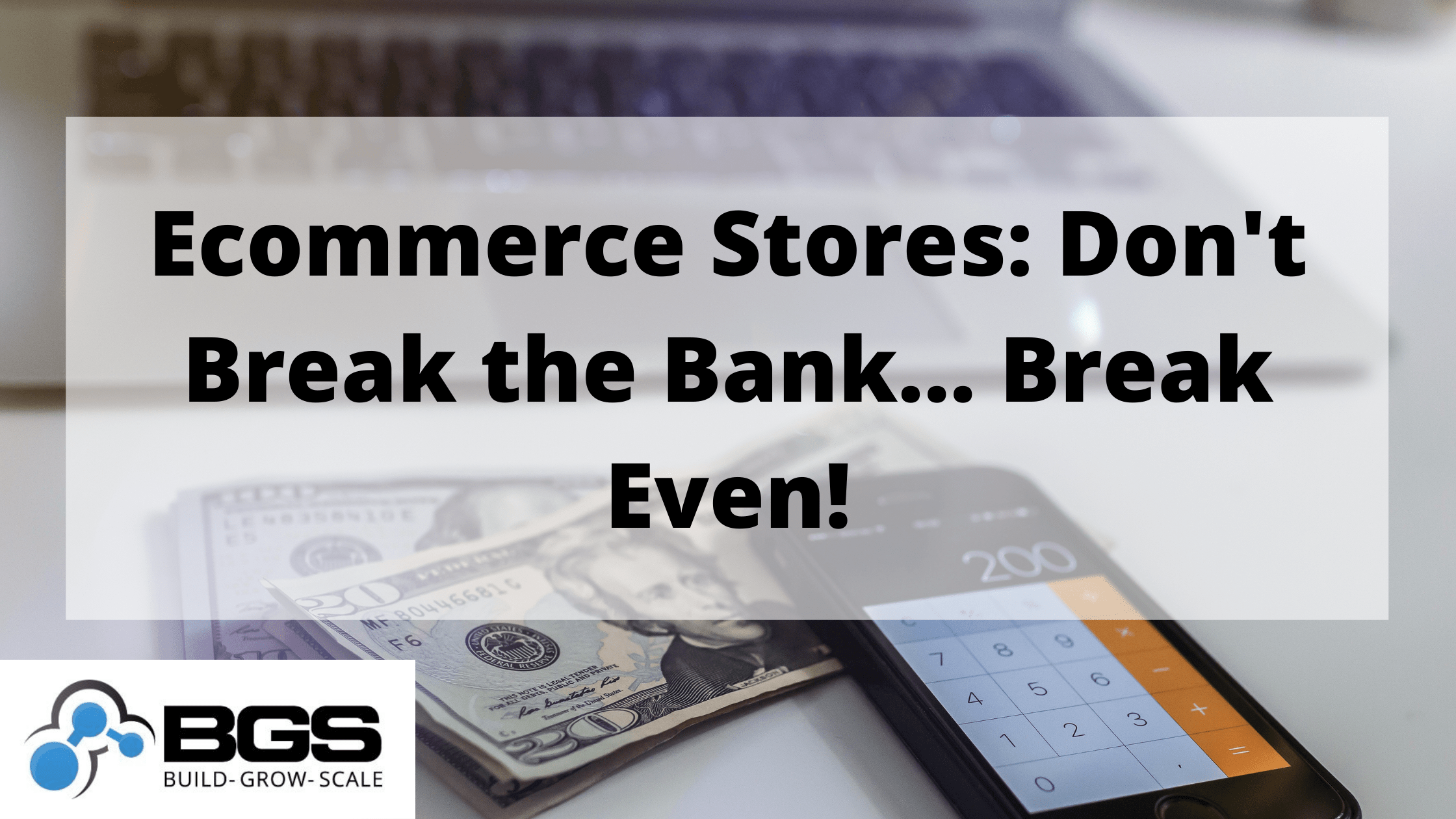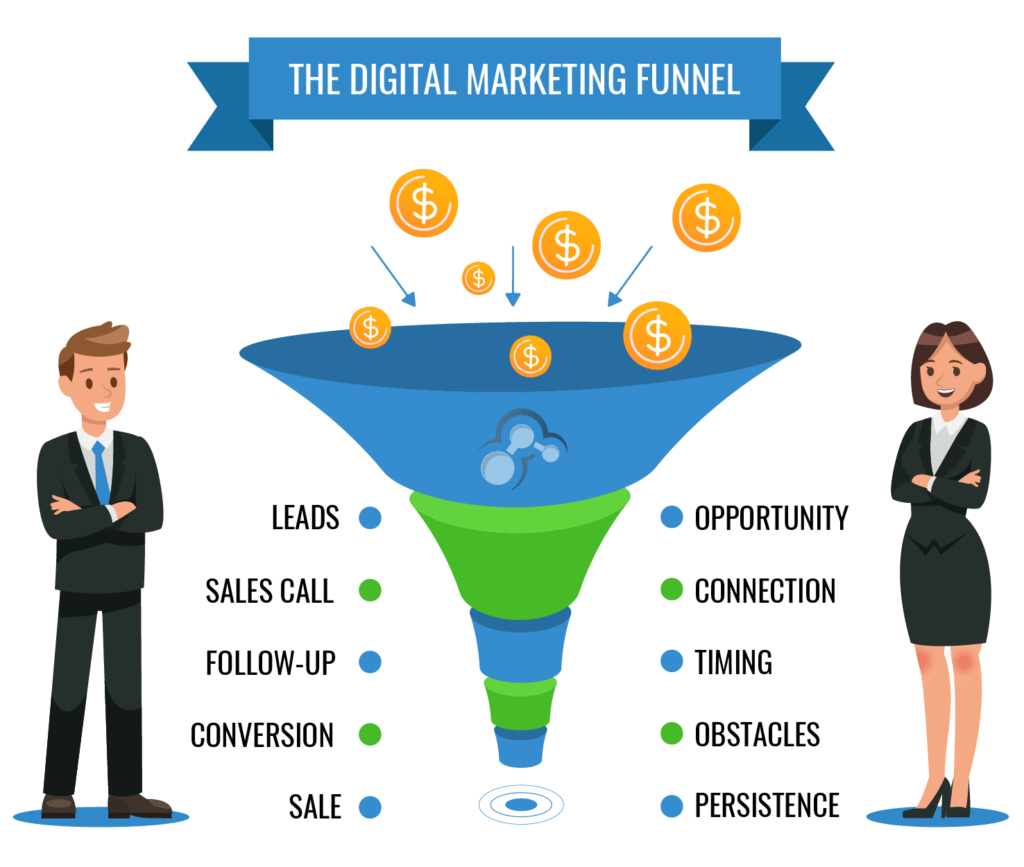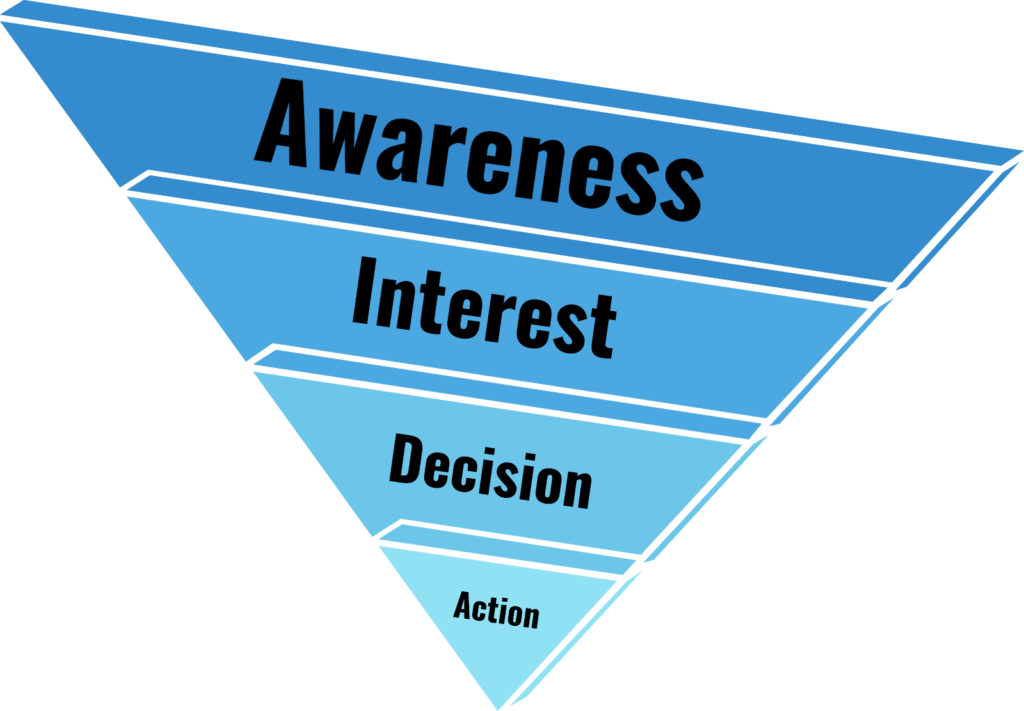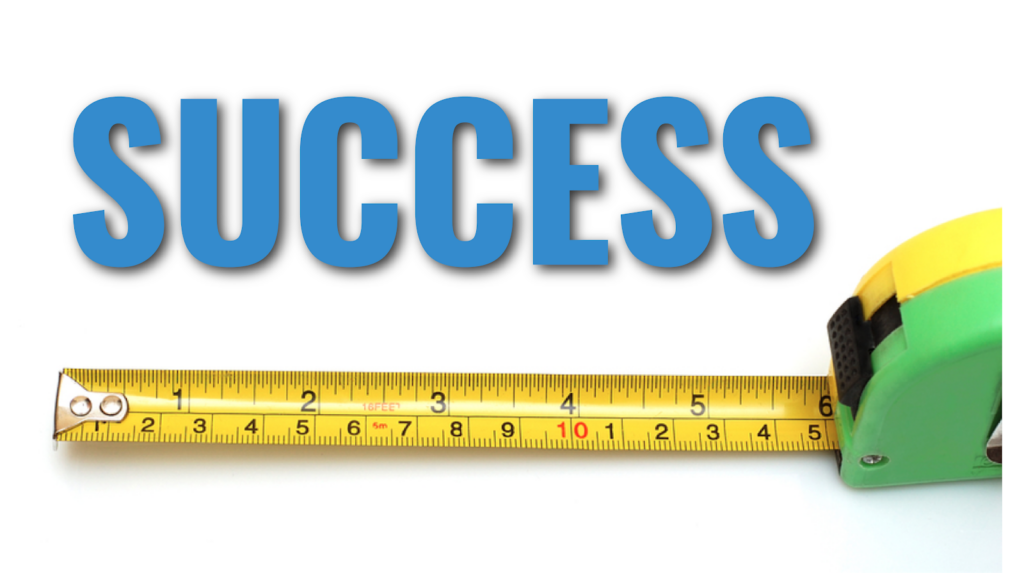Ecommerce Stores: Breaking Even for Long-Term Success!

james backenstose | Sep 29, 2020
Reading Time: 8 minutesBreaking Even on the Frontend Should Be Your Main Goal with Paid Traffic – using breakeven funnels
All successful marketers start with this sales funnel … It’s called a BreakEven Funnel.
What’s a breakeven funnel, you ask?
It’s not a typical sales funnel (the path buyers travel as they head toward making a purchase). It simply means that whenever you put $1 into paid ads, you get $1 back in sales.
If you just sell one product on the frontend with nothing on the backend, you’re going to go broke … eventually.
See, amateurs focus on the frontend, and professionals (millionaires) focus on the backend.
Once you’ve done all the work of creating a product, why not double your income by selling another product to the people who’ve already bought?
It’s a simple idea, but I think we all miss it at first. So keep in mind, your first product shouldn’t make you money (and if it does—sweet!).
Instead, focus on building a list of buyers. From there, keep selling to your buyers’ list … and profit!!
Frontend vs. Backend Sales
Marketers refer to frontend and backend marketing campaigns. The frontend is the first product that a new customer buys. The backend is all the additional products that a customer buys from you over the time that they remain your customer.
The difference between backend and frontend sales
It’s costly to find customers who’ll buy from you the first time. But once customers buy from you the first time, they have a chance to get to know you. They see the quality of your product. They see how fast you ship the product, and whether or not they have a customer service problem when they order from you.
Customers who’ve bought from you and who are happy with their purchase are much more likely to buy from you in the future. You aren’t a stranger to them. Their experience with you is that you deliver on your promises. They now have a reason to trust you. A relationship has been formed.
If you offer them additional products to buy, they’ll have much less resistance to purchasing from you than they might feel if they’d never bought from you before.
It can cost a marketer as much as 15 times more to find a new customer than it does to sell an additional item to an existing customer.
It’s expensive to find a new customer because you have to pay for printing and postage to mail to everyone on the list, but only a very small percentage of those prospects order. But, those people who do order are golden. They’ve raised their hand, as if to say, “I’m interested in what you have to sell. Here, take my order!”
It also costs much less to sell to an existing customer because you don’t have the expense of finding interested parties hiding within a larger list. They are right there in your customer file.
And even though you are spending less to reach them, their response rate for additional products will be off the charts compared to the response rate from people who’ve never bought from you before.
So, with lower costs and a higher response rate, most businesses find that almost all of their profit comes from backend sales.

What Is a Sales Funnel?
Now that you know of the breakeven funnel, let’s dive into the sales funnel.
The sales funnel is each step that someone has to take in order to become your customer.
Let’s look at a brick-and-mortar sales funnel:
-
- The people at the top of the sales funnel walk by your store.
-
- A certain percentage of them decide to walk in, that’s the next step of the funnel.
-
- A customer sees a rack of T-shirts on clearance. Thumbing through the rack is the next step of the funnel.
-
- Then the customer selects four T-shirts and walks to the check-out. They’re at the last step.
-
- If all goes well, they finish the purchase and reach the bottom of the funnel.
This same process plays out for every business in one way or another. This could be your sales funnel:
-
- Sales team
-
- Website
-
- Personal consultation
Any marketing channel can be part of your sales funnel. And your funnel might be spread across several channels.

How to Build a Sales Funnel
Step 1: Analyze your audience’s behavior
The more you know about your audience, the more effective your sales funnel becomes. You’re not marketing to everybody. You’re marketing to people who are a good fit for what you sell.
Sign up for a Lucky Orange account and start watching user recordings and heatmaps as well as click maps. These user-behavior reports help you monitor site activity and figure out how people engage with your site.
Where do they click? When do they scroll? How much time do they spend on a particular page? All of these data points help you refine your buyer personas.
Step 2: Capture your audience’s attention
The only way your sales funnel works is if you can lure people into it. This means putting your content in front of your target audience.
Take the organic route and post tons of content across all of your platforms. Diversify with infographics, videos, and other types of content. Make sure to try different marketing angles to test what sells better.
If you’re willing to spend more cash, run a few ads. The ideal place to run those ads depends on where your target audience hangs out.
Step 3: Build an optimized product page
Your ads and your other content need to take your prospects somewhere. Ideally, you want to direct them to a landing page with a can’t-miss offer.
Since these people are still low in the sales funnel, focus on capturing leads instead of pushing the sale.
A landing page should steer visitors toward the next step.
You need a bold call to action that tells them exactly what to do, whether it’s downloading a free e-book or watching an instructional video.
Step 4: Create an email drip campaign
Market to your leads through email by providing amazing content. Do so regularly, but not too frequently: one or two emails per week should suffice.
Build up to the sale by educating your market first. What do they want to learn? What obstacles and objections do you need to overcome to convince them to buy?
At the end of your drip campaign, make an incredible offer. That’s the piece of content that inspires your leads to act.
Step 5: Keep in touch
Don’t forget about your existing customers. Instead, continue reaching out to them. Thank them for their purchases, offer additional coupon codes, and involve them in your social media sphere.
Backend Sales Techniques
Have a stellar first product
More important than any other technique is to have a great first product.
If someone buys a $20 product from you and the quality is shoddy, chances are, they aren’t going to buy a $200 product from you.
On the other hand, if they spend $20 with you and the quality is off the charts, they’re going to be much more willing to spend $200 with you the next time.
And never forget, the first and most important backend selling technique is to have a stellar first product.
“Thank You” page upsells
Selling someone a second product when they’ve already purchased a product is one of the most effective techniques around.
This was one of the most successful techniques for McDonald’s. After placing someone’s order, the employee would ask: “Would you like fries with that?”
Likewise, if you were selling bed sheets, you might ask—after they’ve placed their order—if they’d also like pillow covers.
When someone decides to buy something, they’ve switched into “buying mode.” They’re much more likely to buy something else at that moment more than at any other.
Cross-selling during checkout
Another common technique is to sell related products during the checkout process.
As you take the chance you may alienate some buyers by trying to sell them more products before they can purchase what they wanted to purchase.
That said, the gains from using this technique often offset the risk. You have to test it to see what the real-world results are, of course.
One good example of this is GoDaddy. Before you check out, they try to sell you all kinds of products, but it’s still fairly easy to check out and buy a domain with them.
Email marketing
Email marketing is the ultimate backend selling technique. If you can’t make the sale today, you can make it tomorrow—or next week, next month, or even next year.
If you have your customer’s email, aim to build a relationship with your customers by sending them useful emails that they’ll actually want to read.
Over time, they’ll come to trust you. Once you have their trust, all you need to make a sale is great copywriting that gets them excited about a product.
These backend sales techniques are used by companies of all sizes, from giants like Amazon to small mom-and-pop online shops, with great success. Apply them to your own business, and you may be shocked at just how effective they truly are.
Retargeting
Think of retargeting as capturing those window-shoppers who come to your website to browse but don’t buy or take any converting action.
Retargeting allows you to put your brand in front of these shoppers as they browse the internet or social media.
According to Invesp, recent studies indicate that in the US, the ecommerce website conversion rate stands at an average of 2.63%, while globally, the conversion rate is 4.31%.
Retargeting helps to claw back some of the +95% of customers who didn’t buy the first time. It can take the form of cleverly displaying products the customer added to their basket and abandoned, the hotel they looked recently but didn’t book, a service they were engaged with yet did not opt for a free trial, and more.
Conclusion
Every ecommerce store and marketer should have one main goal in mind from a paid-media perspective. That goal is to break even and, if lucky, be minimally profitable because of their paid-media ads. Simply breaking-even on paid media allows a store owner to execute all the backend techniques at their disposal, potentially resulting in huge profits!
But without a structured backend that uses email, SMS, retargeting, and so on, 99% of stores fail! In fact, many people are so focused on the frontend that they struggle to be profitable and ultimately close their ecommerce store.
Apply the 80-20 rule (which posits that 80% of an outcome is the result of 20% of the input) by focusing on the backend of your store, converting those customers, and making it rain Benjamins for days!

Resources
Saleh, K. (2020). The average website conversion rate by industry. Invesp Blog.
Tardi, C. (2020). 80-20 rule. Investopedia
Frequently Asked Questions
In marketing a funnel is a visual representation of the customer journey from the initial stage of awareness to the final stage of making a purchase. It typically consists of multiple stages, such as awareness, consideration, conversion, and retention. The goal of an ecommerce sales funnel is to guide potential customers through each stage, nurturing and converting them into paying customers.
Ecommerce breakeven funnels refer to marketing strategies designed to achieve breakeven or profitability for an ecommerce business. These funnels focus on optimizing the sales process to generate enough revenue to cover the costs associated with acquiring customers and running the business.
While all stages of a sales funnel are important, the conversion stage is often considered the most crucial. This is where potential customers make the decision to purchase a product or service. Conversions directly impact revenue generation and business growth. Therefore, optimizing this stage with persuasive messaging, effective calls-to-action, and a seamless purchasing experience is vital in maximizing sales and revenue.



Table of Contents
Frontend vs. Backend SalesThe difference between backend and frontend salesWhat Is a Sales Funnel?How to Build a Sales FunnelStep 1: Analyze your audience’s behaviorStep 2: Capture your audience’s attentionStep 3: Build an optimized product pageStep 4: Create an email drip campaignStep 5: Keep in touchBackend Sales TechniquesHave a stellar first product“Thank You” page upsellsCross-selling during checkoutEmail marketingRetargetingConclusionResourcesFrequently Asked QuestionsTable of ContentsAbout the authorLeave a Comment Cancel ReplyAbout the author
james backenstose
Introducing the one-of-a-kind, James, more familiarly hailed as the world's unique JimmyApp! Since his embarkation on the journey with Build Grow Scale (BGS) back in November 2017, he's proven to be the company's stalwart, seasoned Revenue Optimization expert—the one with the longest standing tenure. He skillfully helms BGS's largest revenue-generating store, with a dynamic blend of professionalism, acumen, and innovation. • No problem is too complex for James. Whether it's a trivial hiccup or a formidable conundrum, he's your go-to solution virtuoso. His uncanny ability to troubleshoot issues is something to behold, solving them personally 90% of the time. And in those rare instances when the solution eludes his reach, rest assured, he's got a Rolodex of contacts who can step in and get the job done. • But don't let his professionalism deceive you. Behind the knowledgeable facade, there's a jester who never misses an opportunity to infuse the workday with playful antics and quick-witted humor. He has an inherent talent to keep the team motivated while having a laugh, an integral part of his personality that has become a cherished staple at BGS. Alongside this, his day-to-day supportiveness is invaluable, always lending a hand or offering a word of encouragement when needed. • In summary, James, our in-house JimmyApp, is a harmonious blend of wit, fun, professionalism, and remarkable problem-solving prowess. His undeniable presence is felt each day at BGS, making the business world a little less serious and a lot more successful!



